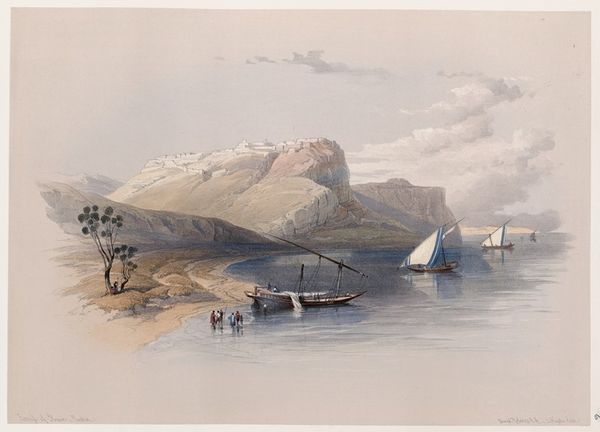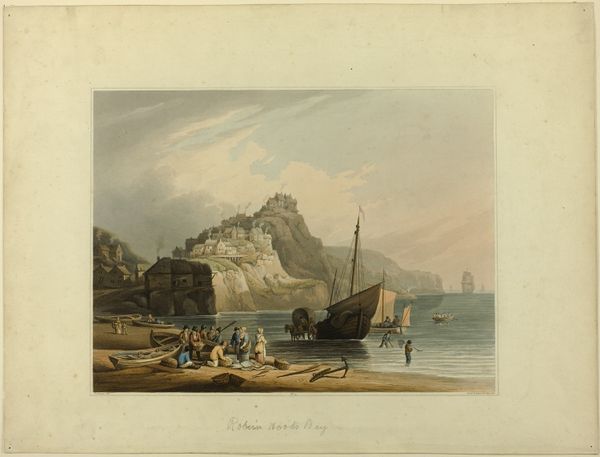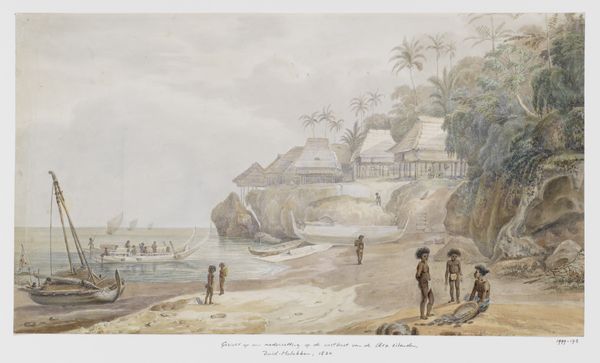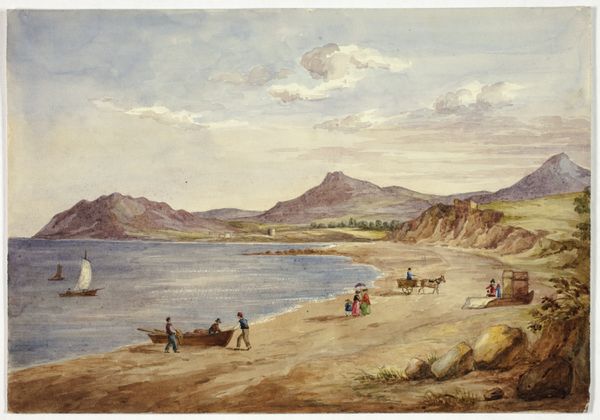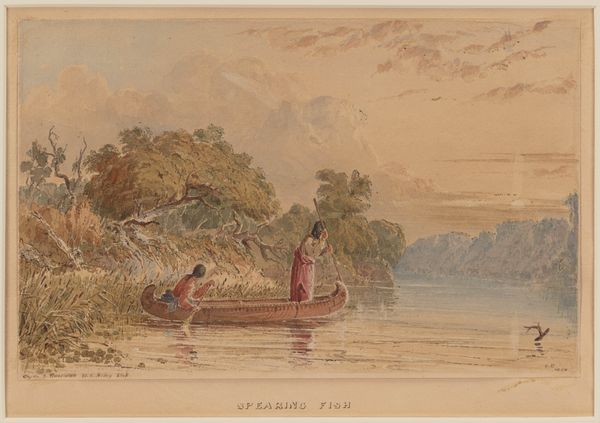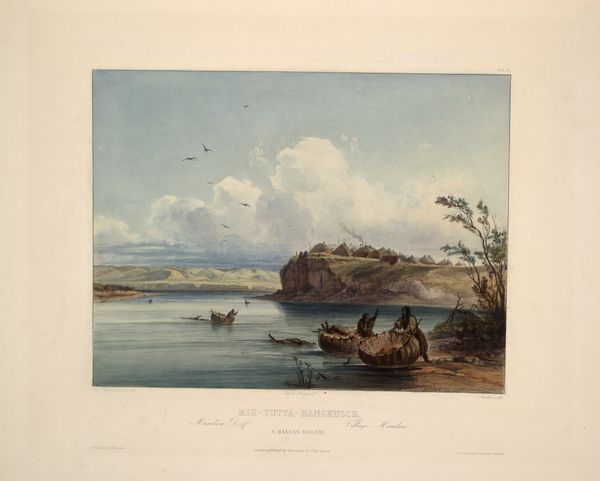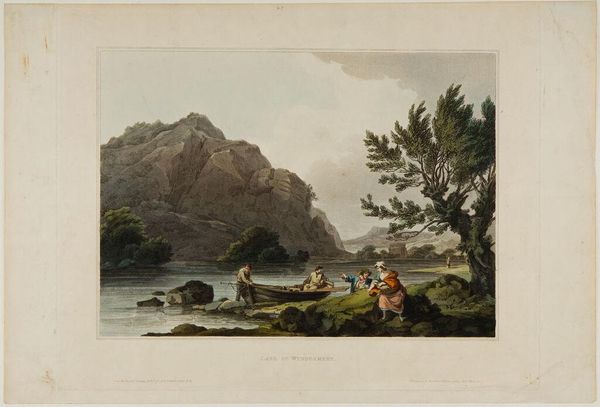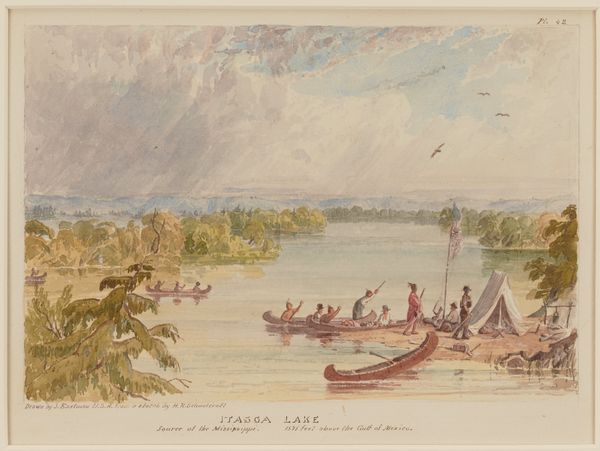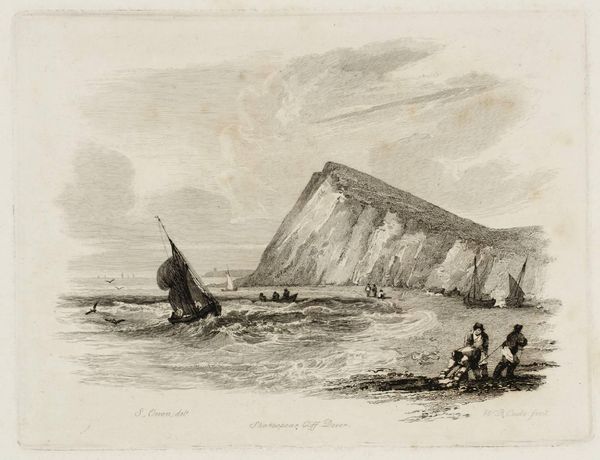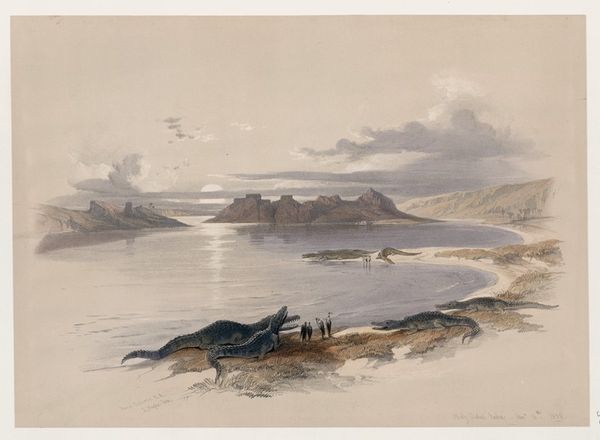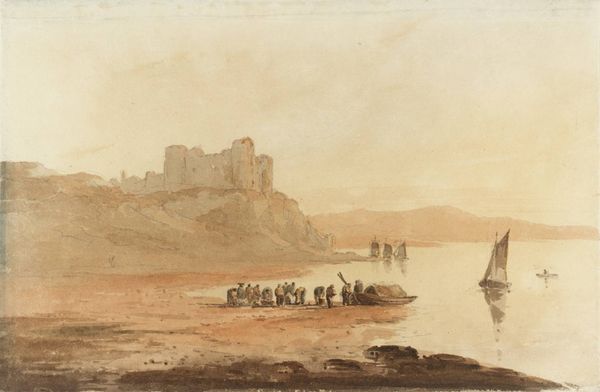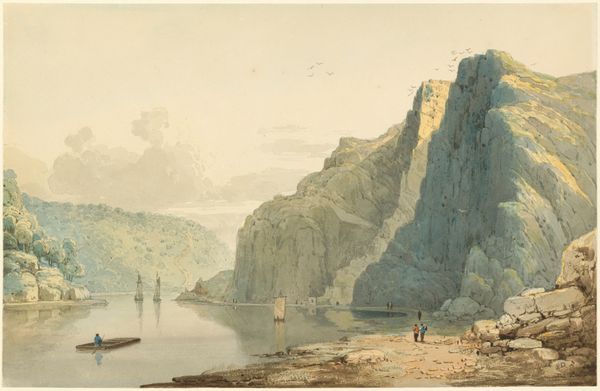
painting
#
painting
#
landscape
#
indigenous-americas
Dimensions: 6 1/2 × 9 3/4 in. (16.5 × 24.8 cm) (image)9 3/4 × 12 7/8 in. (24.8 × 32.7 cm) (sheet)17 9/16 × 21 1/2 × 1 1/8 in. (44.6 × 54.6 × 2.9 cm) (outer frame)
Copyright: Public Domain
Editor: Here we have Seth Eastman's "Wenona's Leap," a watercolor from 1851 depicting a scene at Lake Pepin. The muted colors give it a somewhat melancholic feel, even though there's clearly a narrative unfolding. How do you interpret this work, looking at it today? Curator: Well, I'm immediately drawn to the depiction of labor and the means of production. Notice how Eastman meticulously renders the canoes, each carved from wood – the very source of Indigenous mobility and trade. How might this image simultaneously idealize and erase the intensive labor involved in that production, that making? Editor: That's a perspective I hadn't considered. I was focused on the story implied by the title, imagining Wenona’s tragic jump from that cliff. Curator: But consider the social context. Eastman was an army officer, producing these images amidst violent conflict and displacement. The "romance" of the scene is complicated by the harsh realities of westward expansion. The watercolor medium itself, easily transportable, served the purposes of documentation and perhaps even, in a way, conquest through representation. Does focusing on material mean discounting Wenona’s narrative? Editor: Not necessarily, but it reframes it. It reminds us that this image, as a material object, participated in a larger system of power and exchange. Curator: Precisely! And how Eastman's choices -- to use watercolor, to depict certain activities but not others -- contribute to shaping our understanding of this moment in history. Seeing it from this angle shifts it from Romantic art to documentary to instrument of cultural consumption. Editor: It's amazing how focusing on materials and context can reveal hidden layers of meaning! Curator: Absolutely. Considering the making of art makes the viewing of art an richer experience.
Comments
minneapolisinstituteofart almost 2 years ago
⋮
This meticulous landscape is Seth Eastman's illustration for a story interpreted and then published by his second wife, Mary Henderson Eastman. In Mary’s version, young Wenona’s parents wanted her to marry Chaskè, a good hunter, but she loved another. One day, while her friends hunted porcupines along the shores of Lake Pepin along the Mississippi, they watched her jump off a cliff; this work depicts the moments before her leap. As Mary recounted in “The Maiden’s Rock; or, Wenona’s Leap”: “She was there indeed, loudly and wildly singing her dirge, an invocation to the Spirit of the Rock, calm and unconcerned in her dangerous position, while all was terror and excitement among her friends below her.”
Join the conversation
Join millions of artists and users on Artera today and experience the ultimate creative platform.
